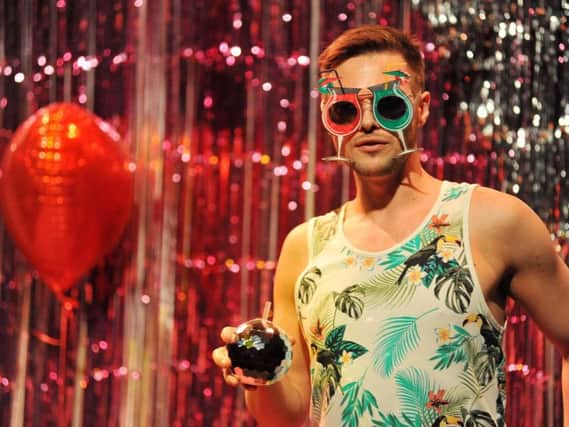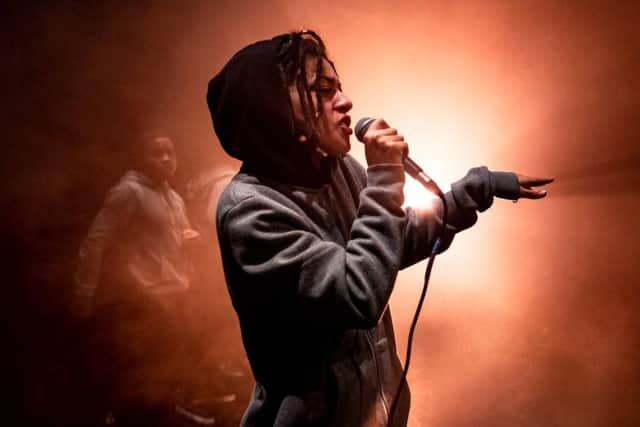Edinburgh Festivals 2019: Plugging into new connections


Everywhere you look in Edinburgh right now, you’ll find razzmatazz and excess. That’s all fine and dandy, but is it po-faced to wish for something more? What’s left behind once the temporary bars and the cultural market leave town? Shouldn’t art make deeper connections?
Many theatremakers think it should. For them, a show is not just about the hour they spend on stage, but everything that happens around it. The people behind the Greenhouse Theatre, the Fringe’s first zero-waste venue, for example, are happy to mount eco-themed plays as long as the infrastructure itself is sustainable. “Every action we take – both as professional creatives and as members of the public – has significant environmental implications,” says artistic director Oli Savage. “Ensuring we remember that is incredibly difficult and incredibly important.”


Advertisement
Hide AdIt’s the kind of approach being encouraged by the SIT-UP awards, launched last year by philanthropist David Graham to help companies achieve greater social impact. The £5000 first prize will go to the show that creates the “greatest change in audience perception, understanding and empathy for an issue”. A parallel ticket scheme will help relevant audiences get to see shows they could otherwise not afford. “It’s great to see more and more shows that are looking at a wide range of social issues,” says Graham.
He’s not alone in trying to make a difference. The Fringe Society is running events for performers on mental health, diversity and inclusion, while the Edinburgh International Festival is staging a series of public talks on subjects such as class, gender and the environment. Straddling both festivals is Beatbox Academy, an EIF project that has introduced students at Leith Academy to the beatbox techniques used in Battersea Arts Centre’s Fringe show Frankenstein: How To Make A Monster.
“I thought the show wouldn’t make sense without doing that,” says BAC Beatbox Academy’s Conrad Murray. “To come, perform and then go is not what hip hop is about, which is everyone being connected and wanting other people to get on the mic. We’re coming to another country, speaking in a different dialect and if we want people in Leith to be part of the show, we need to get down with their crew, get them part of our process and learn from their stuff as well.”
True to this democratic spirit, certain performances at the Traverse will kick off with a curtain-raiser featuring Edinburgh’s freshest young talent. “The lasting impact is important,” says Murray. “When we go, those artists will make connections with each other and hopefully it’s something that will keep going. If we don’t fight for the platform, who’s going to know about these amazing artists in Leith?”
It isn’t all about activism, however. For many theatremakers, a visit to the festival is an opportunity simply to connect with Scotland’s culture. Multidisciplinary artist Lara Kramer is acutely sensitive to the history of Canada, being of mixed Oji-Cree and settler heritage. For that reason, she wouldn’t want to tour with her three shows (Native Girl Syndrome, This Time Will Be Different, and Miijin Ki) without acknowledging the history of the place she has come to.
“On Turtle Island, currently known as Canada, 99.8% of the land has been stolen, swindled and taken away,” she says. “This history of colonial violence is pervasive and continues to this day. This is our government’s legacy and Canada’s bloody history. I’m very curious to discover corresponding histories in Scotland.”
Advertisement
Hide AdPerformer Tomson Highway, also part of the Indigenous Contemporary Scene programme, has a similar perspective. He points to the men from the Orkney Islands recruited by the Hudson’s Bay Company to man the fur trading posts across Canada’s vast northwest.
“Many of those young men from Orkney never saw their homeland again and lived among the Cree Indians of Canada, eventually became fluent in my language which is Cree, the language you will hear in Songs In The Key Of Cree,” he says. “In many cases, the young men married Cree women, giving birth to entire generations of half-Cree/half-Scottish people with family names like Linklater, Ballantyne, McCallum and Spence. My own paternal grandmother’s maiden name, for example, was Ballantyne, thus making me 63/64ths Cree and 1/64th Scottish, making me, in other words, your long-lost relative.”
First Time, Summerhall, Until 25 August
Frankenstein: How To Make A Monster, Until 25 August
Native Girl Syndrome, Summerhall, Until 11 August
This Time Will Be Different, Summerhall, 13 - 18 August
Miijin Ki, Summerhall, 20 - 24 August
Songs in the Key of Cree, Canada-Hub @ King's Hall, Until 18 August